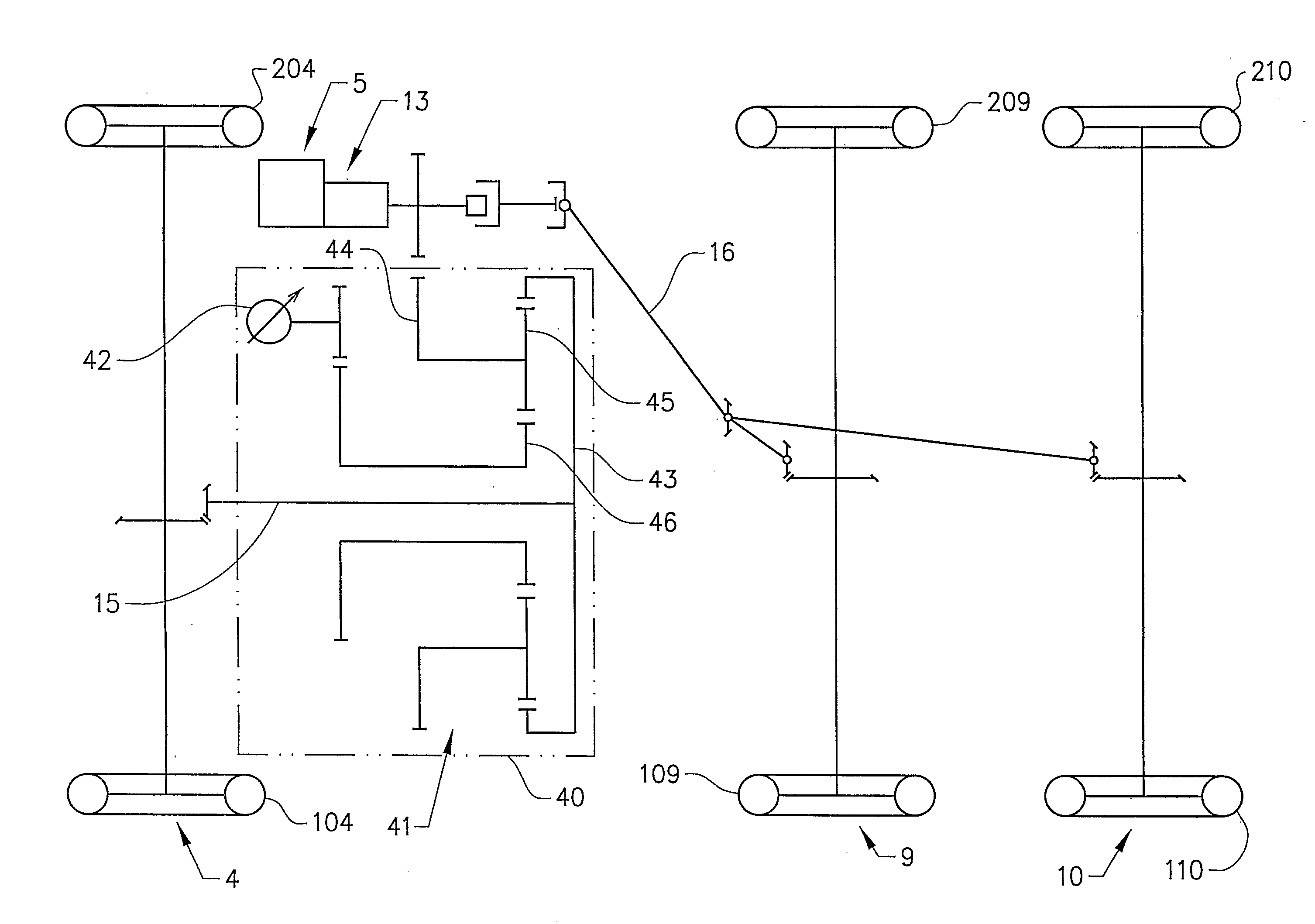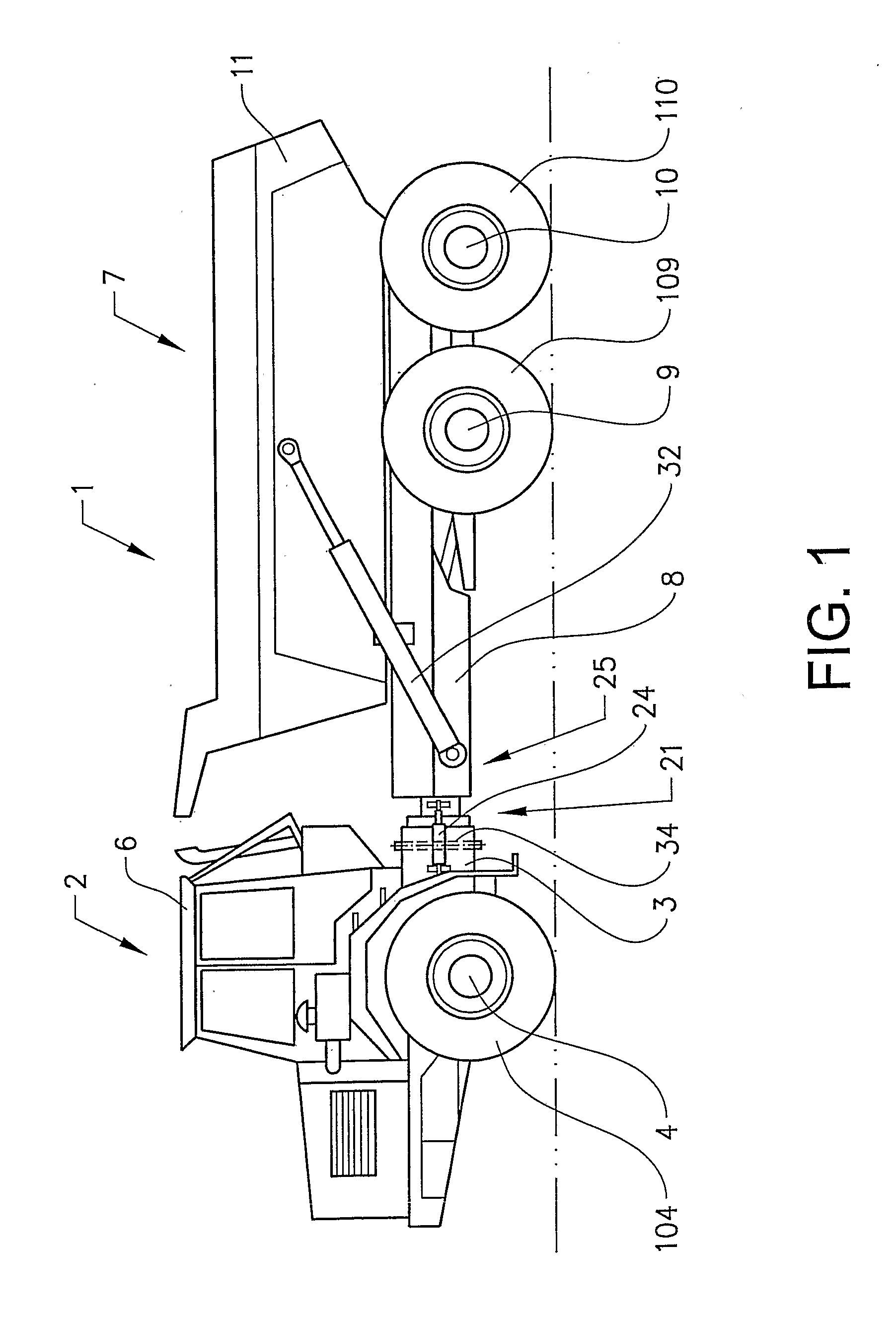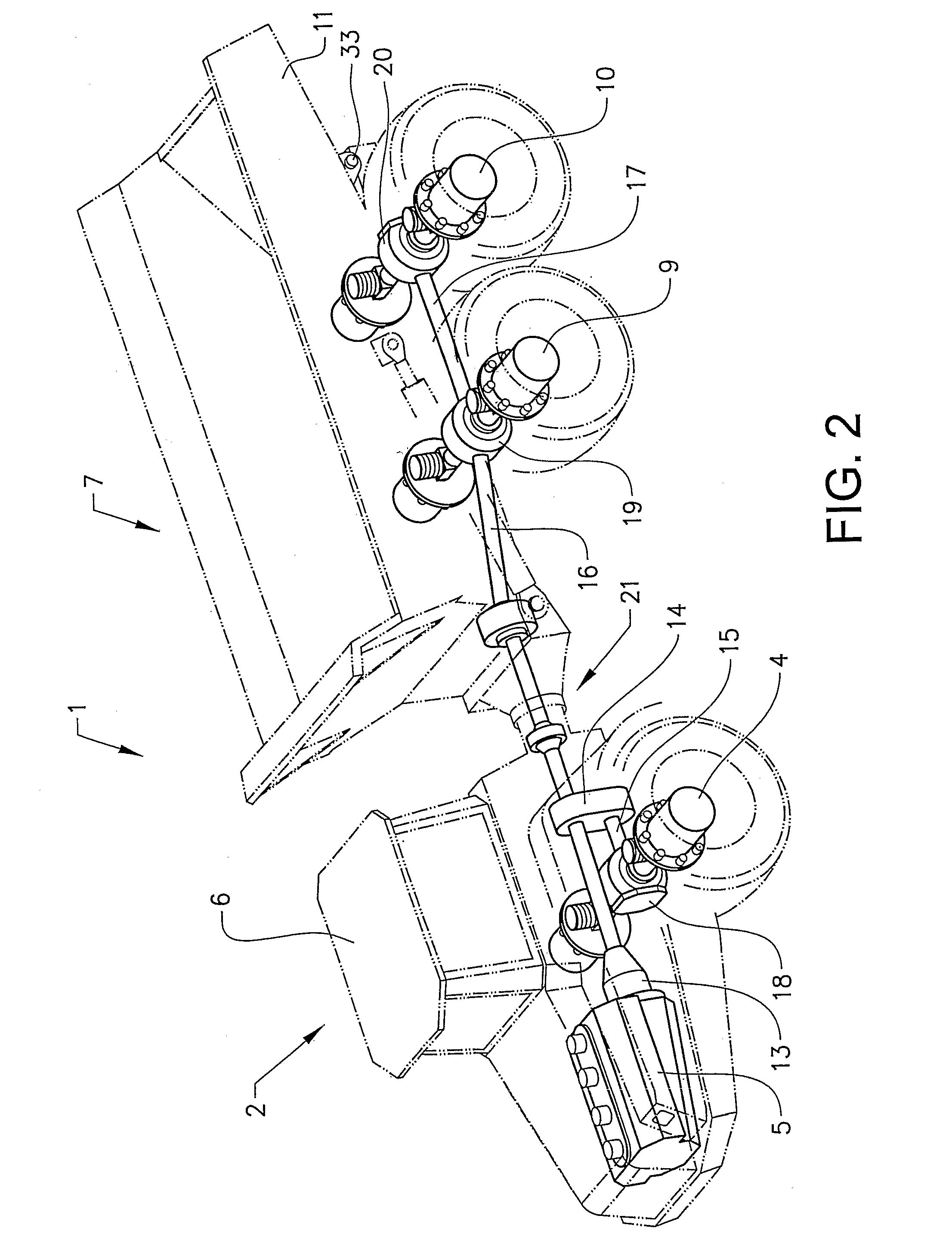Method for Controlling Rotation Speed
- Summary
- Abstract
- Description
- Claims
- Application Information
AI Technical Summary
Benefits of technology
Problems solved by technology
Method used
Image
Examples
Embodiment Construction
[0035]FIG. 1 shows an articulated hauler 1 in a side view. The articulated hauler comprises a front vehicle section 2 comprising a front frame 3, a front axle 4 and a cab 6 for a driver. The articulated hauler 1 also comprises a rear vehicle section 7 comprising a rear frame 8, a front axle 9, a rear axle 10 and a tipping load container, or platform, 11.
[0036]The front and rear axles 9,10 in the rear vehicle section 7 are connected to the rear frame 8 via a bogie arrangement 12, see FIG. 3, and will be referred to below as the front bogie axle 9 and rear bogie axle 10 respectively.
[0037]The front axle 4, the front bogie axle 9 and the rear bogie axle 10 each comprise a left ground-engaging element 104,109,110 and a right ground-engaging element 204,209,210 in the form of wheels.
[0038]The front frame 3 is connected to the rear frame 8 via a first pivot joint 21 that allows' the front axle 3 and the rear axle 8 to pivot relative to each other around a vertical pin 34 for steering (tur...
PUM
 Login to View More
Login to View More Abstract
Description
Claims
Application Information
 Login to View More
Login to View More - R&D
- Intellectual Property
- Life Sciences
- Materials
- Tech Scout
- Unparalleled Data Quality
- Higher Quality Content
- 60% Fewer Hallucinations
Browse by: Latest US Patents, China's latest patents, Technical Efficacy Thesaurus, Application Domain, Technology Topic, Popular Technical Reports.
© 2025 PatSnap. All rights reserved.Legal|Privacy policy|Modern Slavery Act Transparency Statement|Sitemap|About US| Contact US: help@patsnap.com



